Best Vacuum Cleaners For Every Use Case [Full Buying Guide]
Want to know the best vacuum to buy? Where to buy a vacuum? The best way to vacuum your floor?
I’ve spent more time research and evaluating carpet than is probably healthy, but now I’m giving you everything I’ve learned for free.
The good news is this is all unbiased: I don’t work for a vacuum company or store, so there’s no hidden agenda. I just write about carpet and flooring, and naturally, I get lots of questions on vacuums.
Most Popular Best Vacuum Articles
Best Vacuum for Pet HairBest Vacuum for the MoneyBest Vacuum for Allergies
Best Vacuums By Budget
Best Vacuum Under $100Best Vacuum Under $200Best Vacuum Under $300
Benefits of vacuums
Buying a vacuum isn’t thrilling, but it is important. Here are a few of the benefits of a good vacuum:
- improves indoor air quality (lungs like clean air!)
- reduces allergy and asthma symptoms (bad vacuums take allergens from the floor and blow them into the air)
- extends the life of carpet and flooring (debris wears on carpet, but certain vacuums also can tear up your floor)
And maybe the most important one: A good vacuum makes your life easier and less stress. No one wants to deal with an inflexible cord or suction that won’t pick up a Cheerio when they’re trying to do chores.
If those articles don’t speak to you, I’ve done some more specific tests with different kinds of carpet and for people with different needs that you’ll find below.
What besides best vacuums will I find in this guide (table of contents)
- best vacuums for specific cases
- do you get what you pay for? What to expect in vacuum price ranges
- complete list of today’s vacuum features
- why advice on how often you should vacuum may be wrong
- vacuuming tips
- you can’t mention vacuuming without this: vacuuming and allergies
- best places to buy a vacuum
Best vacuums for specific cases
Above I covered the best vacuum for the money, for pet hair, for allergies and divided by budget. If that didn’t cover what you need, here are a few specific cases I find important:
- best lightweight vacuum (helpful for elderly, arthritis and smaller people)
- Dyson cordless stick comparison(the best cordless stick vacuums)
- best vacuum for Berber carpet
- best vacuum for shag carpet
- best canister vacuum
- best vacuums for small apartments
- best vacuums for high pile carpet
- best vacuum mop combo
If you still haven’t found what you needed, I have other articles and also would be happy to answer your questions. Let me know in the comments below!
Types of Vacuums
There are 7 different types of vacuums you can buy (more if you break down into cordless vs corded). Most people go with an upright, and frankly, that’s the best choice for most people.
But if you’re dropping a few hundred on a vacuum, it’s worth your time at least looking at the pros and cons of your 7 choices:
Upright vacuums
This is your standard vacuum. It’s the best option for most people because uprights are the 2nd most powerful option. The most powerful is the central vacuum (see below), and they are much less common and take planning to install in your home. Highlights of upright vacuums:
- most powerful mainstream option
- wide range of prices from 50-1,000+
- optional accessories to clean nearly anything in your home
- biggest disadvantage: difficult to clean stairs due to the weight and it all being “one piece”
Canister
I cover canister vs upright below in the “FAQ on Vacuum Features” section because it’s the most similar to the upright. It does have some key differences though. Here are the highlights:
- best vacuum for cleaning stairs because it’s designed to carry
- just slightly less effective than uprights for cleaning carpet (in general)
- wide range of prices from 50-1000+
Stick
Why a stick over an upright or canister? Because they (can be) cheaper, lighter, and easier to store. They make great vacuums for small apartments and for the elderly. Here are the highlights:
- Lightest vacuum (outside of handheld) to clean a house or apartment
- Minimal design can make some of the most affordable vacuums
- New technology is making powerful sticks that compare with uprights but much lighter to use. Dyson v7, v8, and V10 are the best example
- Drawback: good for smaller places and hard floors, but don’t clean carpet as well as uprigths or canisters
Handheld
The first 3 vacuums were whole house cleaners. The handheld is in a league of its own with pretty obvious advantages and disadvantages. Here’s the highlights:
- light and cheap
- great for dusting high up areas, spills, and cat litter
- disadvantage: not a whole house cleaner
Robot
Robot vacuums have come a long way. Even the cheaper ones do a pretty good job of avoiding getting stuck and falling off stairs. Here’s the current state of robot vacuums:
- excellent job cleaning hard floors and pretty good job at cleaning carpet
- the better models will pick up pet hair
- very effective robots can be found for <$400. but you can also pay a lot more for bells and whistles: auto-emptying, smart phone controls, etc
- disadvantage: doesn’t quite replace an upright vacuum for deep cleaning carpet
Central vacuum system
You don’t see central vacuum systems much (at least in the United States), but they make an interesting options. Basically, central vacuums systems are vacuums built into your home. A motor and canister are built in somewhere like a garage or near outdoors. Then, there’s a hose system inside the walls, and you just connect your hose and go. Here are the advantages and disadvantages:
- most powerful vacuum system since the motor is separate
- best for allergies because debris is sent outside
- easier to maintain and less likely to breakdown compared to other vacuums
- sometimes dealing with the hose can be a hassle, but newer systems fix most of these problems
- since you’re not lugging a vacuum motor around, it’s lighter than other systems
- biggest disadvantages: upfront costs are high $1,000+ (but it may add to your homes value), and it’s best to install during a remodel or a new home build.
FAQ on Vacuum Features
Wondering which vacuum features are best for your home?
- Do I need a HEPA filter? Are there differences in HEPA filters?
- Bag or bagless vacuum?
- Do dirt sensors work?
Let’s cover these and other common and not-so-common vacuum features:
Bag vs Bagless
In general, bag vs bagless vacuums won’t make a major difference in performance. Bag vacuums have the advantage of releasing less debris in the air when emptying, which is a plus for allergy sufferers. On the other hand, bagless vacuums have a more modern design, and you save money not paying for bags! If you’re still on the fence, I have a detailed article on bag vs bagless vacuums that gives a table comparison, as well as details regarding allergies, pets, and more.
Beater bar: Yes or no?, Adjustable or not?
Beater bars are a catch 22. Some people tell you not to have one so it doesn’t tear up your carpet, but some people say carpet doesn’t get clean without one. The best of both worlds is a beater bar that can be turned on and off. This allows you to use it when you need to hit a dirty spot, but also turn it off for hard surfaces or carpets that are commonly damaged by beater bars: like frieze or Berber.
Canister vs Upright
Canister vacuums are designed to have the motor and dustbin carried, while upright vacuums are all one unit and meant to stay on the ground. This makes canister vacuums easier to clean hard to reach areas and stairs. However, uprights are usually better at picking up pet hair and overall suction because they can have a bigger motor.
Overall, the difference in performance between the two vacuums is small. You won’t find a difference for allergies, hardwood floors, etc. Cost can be about the same. If stairs are a big part of your cleaning job, I’d go with a canister. Otherwise, I’d go with an upright because they have more models (more options to find a good value), and they probably do a little better with overall cleaning.
Cordless Vacuums and other cord features
Cordless vacuums eliminate the hassle of stepping over and dragging around the cord. It makes vacuuming much more enjoyable and flexible to just pull out the vacuum and go. The problem with cordless vacuums is less power.
Battery technology is improving and so is the power of cordless vacuums. Dyson cordless sticks lead the way with high-performance stick vacuums. These can do about anything except deep clean standard carpet (they still work on carpet though), so I’d avoid cordless for an upright vacuum for now.
If you’re going with a cord, consider a retratable one: It’s more fun vacuuming without a cord, but if you have to have one, a cord that winds itself up with the push of a button is a nice feature. It doesn’t have any drawbacks, but you won’t find it on a lot of vacuums.
Dirt sensors
Just how it sounds, “dirt sensors” show a light when there is still debris to be cleaned up where you’re vacuuming. It’s a pretty cool feature, but is it necessary?
In my personal experience, you can hear the dirt being pick up and when the sound stops, the sensor goes off, so I’m not sure how useful it is. So I keep this in the cool but not necessary category.
Filter and HEPA
Allergies are increasing and so vacuum companies are responding by throwing in all kinds of marketing with their filters.
You’d think this would be simple: A vacuum has a filter or not. It’s a HEPA filter or it isn’t. Unfortunately, it’s not that simple.
I wrote a fairly detailed, in-depth guide on what to look for when buying a vacuum for allergies. It will walk you through what to look for in filters, and why a vacuum claiming it has a HEPA filter can be misleading.
In a short summary, HEPA vacuums clear out 99.97% of paricles, which is extremely effective for allergies. The problem is just because a vacuum has a HEPA filter, doesn’t mean the air is filtered through it. A lot of vacuums fail this test, and we find that many particles are expelled into the air. A “sealed system” prevent this; the article will cover how to look for a sealed system and my favorite vacuums for allergies.
Power ratings: Are AMPs, watts, and CPM important?
You’d think vacuum power would be a huge factor in its performance, but it’s much more complicated than that. Some power ratings are misleading, and the one’s that aren’t, don’t tell you as much about a vacuum as you might think.
Power is typically rated in amps or watts. This is how much electricity a vacuum uses. The problem is you don’t care how much electricity a vacuum uses, you care about how much suction it has.
So how do you know how much suction a vacuum has?
Suction power is rated in cubic feet per minute (CFM). The higher, the better. If you’re looking at vacuum power, this is the best measurement. However, it’s best to read a review of how the vacuum actually performs because suction power is only a small part of picking up dirt.
What tools and attachments do I need?
Almost every vacuum will come with some type of attachment. These tools range from crevice tools to get between couch cushions to animal grooming tools. Many people get excited about these tools but never end up using them. If you aren’t using them, they can be sort of annoying because they take up space, fall off the vacuum, and can just generally be hassle.
My advice: before you shop for vacuums, think of what you want to clean with it. Then, make sure it has the tools to clean it. The rest will just be a waste of space. For me, an upholstery cleaning tool is essential (Dyson has a great one). It’s also nice to have one tool with brush fiber to clean blinds and desks.
Other features to consider (or not)
Headlight: Easy to find feature in most vacuums and definitely helpful unless everywhere you vacuum has great lighting (under your couch?). You may opt for LED lighting. Not only does this help get your carpet clean, but it helps you avoid sucking up something important… say your wedding ring.
Self-adjusting cleaner height: Any decent vacuum has a height adjustment, but it’s an important feature so make sure yours does. Some luxury vacuums take it a step further and automatically adjust based on the height of your carpet or hardwood. Not necessary but cool and makes your life easier. It seems like a small feature, but if I’m paying $300 for a vacuum, it’s one I won’t go without now.
Suction control: Some vacuums let you control the amount of suction. This isn’t helpful when cleaning floors because you always want it maxed out. But it can be useful to turn down suction if you want to clean curtains or desktop items without sucking them up.
UV light: This feature is intended to kill more allergens, dust mites, etc. It shows a lot of promise. Currently, there aren’t many vacuums out there that have UV cleaning (Oreck used to make one but discontinued it). The feature shows promise, especially with improvements, to potentially kill dust mites. However, you’ll probably only find it in handheld vacuums at the moment.
Self-propelled: A useful feature for some, but I’m not a big fan. A self-propelled vacuum will generally be heavier, so if there are times you aren’t using the feature, it’s more difficult to use the vacuum. Especially in smaller rooms, it’s often better to move the vacuum back and forth on your own. But if you feel pushing a vacuum is too much of a workout, self-propelled could be a nice feature.
Weight: The weight of a vacuum won’t mean anything to some people, but smaller adults, houses where children vacuum, elderly, or those with joint issues such as arthritis might benefit from a lighter vacuum. A lot of times lighter means less power but not always. Many vacuums weigh over 15lbs. If you want a light vacuum, I’d go with under 10 lbs. I have an article on the best lightweight vacuum for the elderly.
What should you pay for a vacuum?
Vacuum prices range from $25 to $1,000+. “You get what you pay for” is often true, but there are also many times where we test a $200 vacuum that outperforms a $400 vacuum.
There’s no exact amount you should pay, but it’s helpful to know what quality of vacuums you’ll find in different categories. This will help you decide what’s best for you, and pick out a great value when you find one:
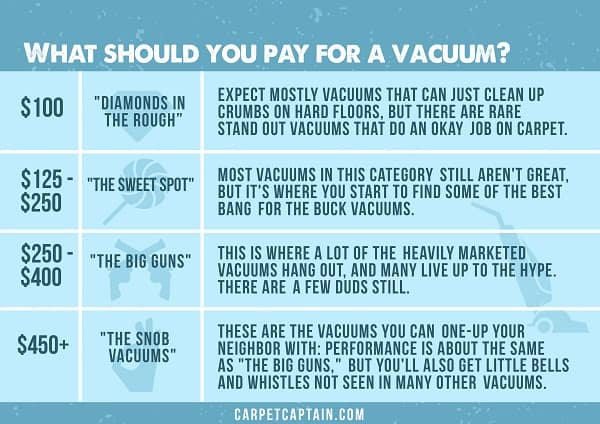
How often should you vacuum your carpet?
Many experts tell you to vacuum your carpet once a week, but I think that is too much for most people. The truth is, there’s no good research on how often you should vacuum your carpet, but let me explain why I think one week is too much:
First off, where did one week come from? It’s probably because every day is unreasonable, and weekly is the next increment.
And the more you clean, the better for your carpet, right?
That’s where I’m not so sure. Vacuums have a beater bar that microscopically wears on the carpet. Yes, they’re designed not to, but they do. Some will even damage carpet quickly if they’re too aggressive.
I do agree you want your carpet as clean as possible, but I also think you need to limit the damage from the beater bar. So my recommendation–with inspiration from The Karate Kid–is:
Carpet Captain’s brush-on brush-off vacuum strategy: Vacuum weekly with the brush roll turned off and one time a month turn it on.
This gives you the best of both worlds: weekly clean ups with more aggressive cleaning monthly. I believe these should give you the most out of your carpet.
Care to debate it? I’d be happy to hear your thoughts in the comments.
Here are some answers to common questions on the Carpet Captain brush-on, brush-off vacuum strategy:
- What if my beater bar doesn’t turn off? In this case, you have no option but to use the brush. However, raising the vacuum height will reduce the amount the beater bar digs into the carpet.
- My dog sheds. Won’t I need to use the brush roll more often? Maybe. Try with the beater off first and see how it does. You might be surprised especially with a powerful vacuum. As a second option, try an upholstery tool in the area your dog lies. It can be effective and gentler.
- What about hard flooring? The beater bar should be turned off anyway. To take it a step further, I’d vacuum these areas as much as possible to keep the debris from floating around the home.
 Captain’s warning! Certain types of carpet will be damaged with a brush roll. This is particularly true with Berber carpet but can also be true with frieze carpet. In these cases, you’ll only want to vacuum without the brush roll. Since you’ll never get the deep clean of a brush, I’d increase your vacuum frequency.
Captain’s warning! Certain types of carpet will be damaged with a brush roll. This is particularly true with Berber carpet but can also be true with frieze carpet. In these cases, you’ll only want to vacuum without the brush roll. Since you’ll never get the deep clean of a brush, I’d increase your vacuum frequency.Okay, this was probably more than you wanted to know on how often to vacuum. Let’s move on:
How to vacuum
Vacuuming can be easy, but there are a few common mistakes. Let’s start with a few things to check-off before vacuuming, and then will go into the best way to vacuum your carpet:
- Check the ground before your start:Check for hard objects on the ground (pennies, paper clips, jewelry etc) because you don’t want to lose something valuable, and they can damage your vacuum.
- Check your beater bar for tangles:The rotating brush on the bottom of the vacuum commonly will grab hairs or carpet strands that get wrapped up in the bar. It’s important to check for these ocassionally and cut them off the beater bar. They’ll melt with the vacuum heat and ultimately damage the vacuum.
- Check your dust bin/vacuum bag and the vacuum filter. This is the biggest cause of vacuums not performing as well as they should. If the filter is clogged or the dust bin is full, it will rob your vacuum performance.
The toothbrush strategy for vacuuming:
The biggest mistake people make when vacuuming is missing the same spots. This is because they vacuum in the same direction every time. Switch it up.
Think of when you brush your teeth: If you use the same hand and start with the same tooth, you’ll miss the same spots in your mouth.
This is the same with vacuuming. Do these 3 things to reduce your chances of missing a spot on your carpet:
- Change the direction you vacuum (if went horizontal across the room las time, do vertical up and down the room this time)
- Change where you start vacuuming
- Consider moving furniture (it helps to get under the furniture anyway)
A few other vacuuming tips:
- Maximize your vacuum’s potential: Newer vacuums come with different height settings and extra tools. Figure out what setting is best (it takes work at first but pays off), and how to best use the extra tools. Many people ignore these features, but if you get it right once, you won’t have to think about it again.
- Don’t over-focus on the carpet: Yes, you want your carpet clean, but if you clean it, and then the air conditioning comes on and blows dustout of the vent, or someone walks in and kicks up debris from a dirty mat, your carpet is immediately dirty again. Many vacuums make it easy to clean vents, mats, etc.
- Check the beater bar: Tangled strings and hair can reduce the beater bar performance, and it’s important part of getting the carpet clean.
- Avoid whipping up the cord: You don’t have to coddle your cord, but if you have a self-retracting cord, make sure to guide it slightly when you hit the button. Otherwise, this can cause damage to the cord over time.
- Tips for rugs: The best way to clean rugs is with an upholstery attachment. If that’s not an option, just make sure to turn off the beater bar (unless you don’t care about the rug).
- Being cheap on bags will cost you:Most vacuums need to be emptied when 75% full or performance degrades (I put this last because high-end vacuums (bag and bagless) claim they don’t lose suction no matter how full the container)
Vacuuming and allergies
This is a hot topic. Allergies are increasing, and vacuums are one of our best tool to eliminate allergens.
The challenge is allergens are invinsible, so you have to trust that your vacuum is doing a good job. To make it even more difficult, companies put millions of dollars behind marketing how great they are at eliminating allergens.
But many vacuums aren’t great. Even vacuums with HEPA filters often have poor designs where the allergens are sucked up from the carpet and blown into the air.
So what are the best vacuums for allergens? I’ve devoted an entire article to it: Best Vacuum for Allergies | Why HEPA is Misleading [Guide]
Where to buy your vacuum
You have 3 options on where to buy your vacuum:
- big box store
- online
- vacuum specialty store
I won’t spend much time on the first two because you’re probably familiar with their main benefit: price. If you know the vacuum that you want, you’ll likely find your best price online or in a big box store.
 Captain’s warning! Buying online can be convenient and the lowest price, which is why many times I recommend it if you know the vacuum you want. However, some online sellers are not authorized retailers of the vacuum. This voids your warranty with most vacuum manufacturers.
Captain’s warning! Buying online can be convenient and the lowest price, which is why many times I recommend it if you know the vacuum you want. However, some online sellers are not authorized retailers of the vacuum. This voids your warranty with most vacuum manufacturers.Vacuum specialty stores are also worth checking into, especially if you’re investing in a high-performing vacuum or are unsure what you want. Why? Because you can often test the vacuums out, not just hold them, but actually use them in the store. This lets you get a feel for the vacuum, see first-hand how effective it is, and if you like the accessories. It’s like test driving a car before you buy it.
My first thought was, “Yeah, I bet they give great service, but they’re also probably expensive.” And yes, you may pay a little for service, but I was shocked to find in my area a local vacuum store that would go as far as to match any price. Most realize there’s a lot of competition and are pretty competitive on price.
Captain’s parting words!
This should be all you need to know to buy your next vacuum.
And be on the look out for Black Friday vacuum deals to save money on your next purchase.
Any questions? Or just want to share your opinion? Comments help all readers, so feel free to leave one below.

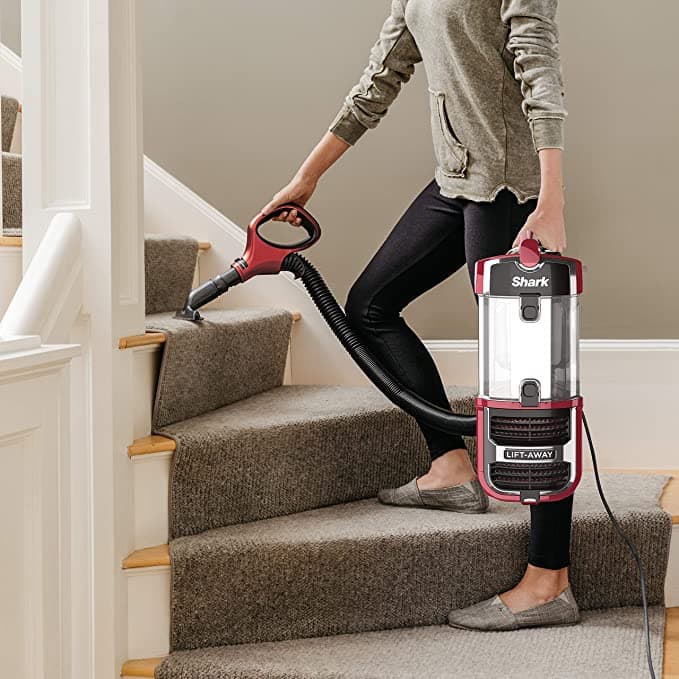
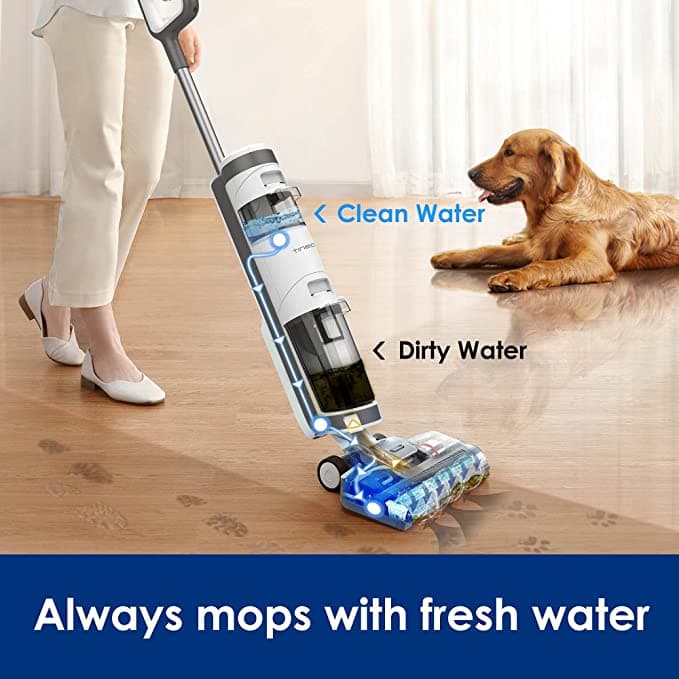
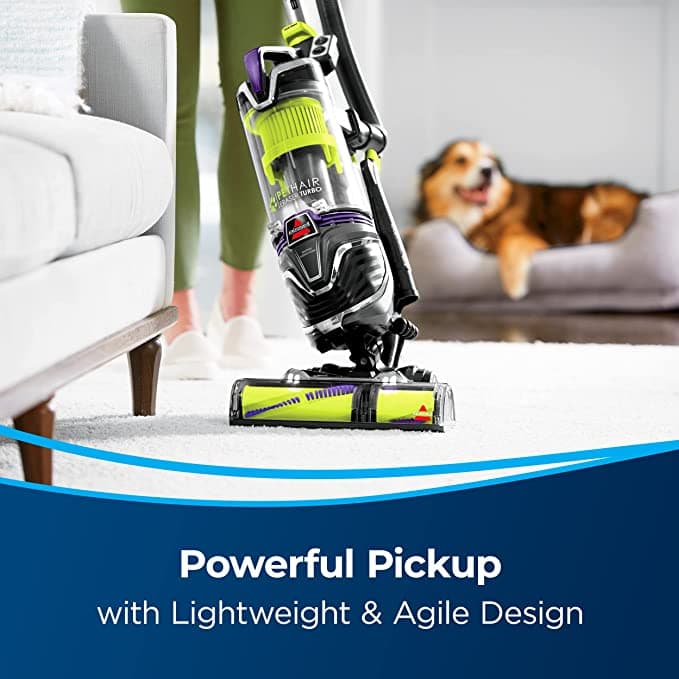
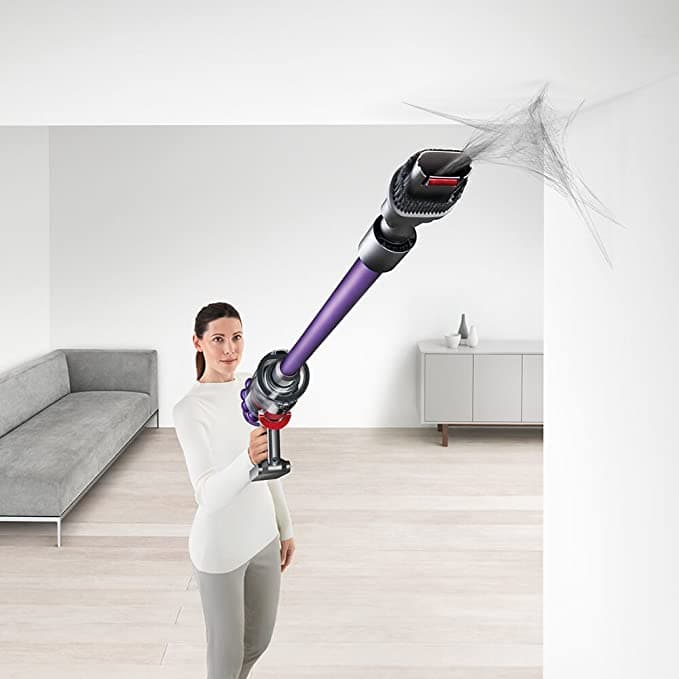
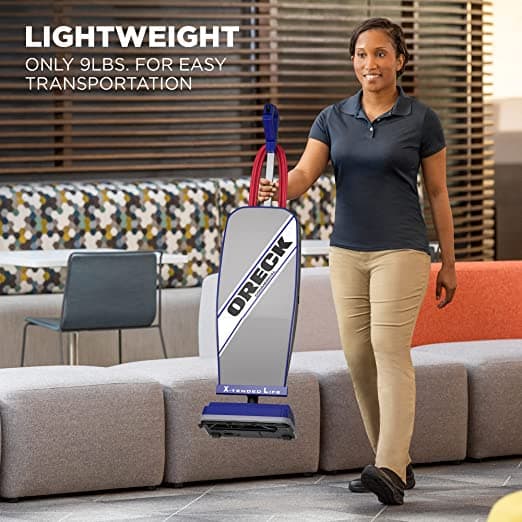

I’ve heard that after installing new carpet there are particles or fibers along with chemicals that are not good to breath. Thus frequent vacuuming of new carpet is recommended. Is this true?
I’be been perusing your site today in search of carpet buying info. Thank you so much for the concise information! I’m glad I found this vacuum info. I had NO idea using a beater bar could kill a frieze carpet. When we first got it, we had a Siberian Husky, the king of all shedders; then a black Lab. I was using a Kirby on it twice a week. It has the adjustable beater bar, but it’s still a beater bar. After a year, it wasn’t looking so good. That could also be because we bought polyester, for a high traffic area. The two worst combos as I have come to find out. Now we’re looking for a pet friendly nylon carpet and I won’t vacuum so often. Thanks again for the info!
This is a great post. I thought I had a huge vacuum post on my blog on how to safely vacuum wool rugs. I appreciate all of the areas you focus on.
In the rug world there are often care instructions that say “do not use vacuums with brushes” and I’ve had some rug stores specifically state to not use Dysons (this usually means the rug quality is too weak so the strong vacuums can pull them apart).
Unfortunately the worst fiber in the rug world – viscose/rayon (also known as bamboo silk, banana silk, and a similar fiber type Tencel – all artificial silk) – are moving into installed wall-to-wall carpet. I have a large article on viscose rugs on my website, but I would love to see you help warn consumers on installing this “paper” fiber in any rooms in their homes. Carpet stores are selling these as luxury fibers, and people are having disasters with all spills and even light activity because… well… the fiber is paper. 🙂
Thanks again – enjoying your site!
Thanks for contributing, Lisa. Checked out your website as well, and seems like a great resource for area rugs. I haven’t seen rayon used in carpet, but are you starting to see it in your area?
I would be interested in your take on Roombas. Ours seems to do a great job vacuuming, but I hate the tracks it leaves around the edges and furniture. Is there a carpet type (other than industrial) that would minimize the tracks?
Good point–the “chaotic” nature of the robot combined with vacuum streaks would be even more annoying than standard vacuuming with streaks (although some people like streaks kind of like stripes after lawnmowing). I’d look into frieze carpet. It doesn’t show streaks and is currently trendy. Berber is another option, but sometimes people think it looks industrial. Basically, the more variation in the carpet the better–different pile heights and colors in the carpet will usually hide streaks.
My wife and I want to get a new vacuum soon, so thanks for this guide. I like your point about how a dirt sensor can help you find areas that were missed. We’ll definitely consider getting a model like this so we never miss any dirt. [link removed]